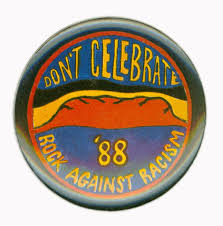Welcome to Another Thursday Doors! This week, we’re off for a walk through part of Sydney’s Redfern, which is located 3 kilometres south of the Sydney central business district. The suburb is named after surgeon William Redfern, who was granted 100 acres (0.40 km2) of land in this area in 1817 by Governor Lachlan Macquarie. You catch the train to Redfern Station to get to the University of Sydney and the footpaths are heavily populated by streams of students.

Well you might ask why we’re going on a doorscursion around the backstreets of Redfern, when we haven’t been to the Sydney Opera House yet. Of course, if I were planning my life around notable doors, that would be a very good place to start. However, as much as I admire doors and could even support a philosophy of “Doors for Doors Sake”, that’s a luxury I can’t afford at the moment. Rather, I’m needing to be pragmatic. It’s more of a case where the door follows me, rather than me following the door. That said, there doors are quite stationary and not moving anywhere so I still need to go to them. I just can’t go too far out of my way.

This week, we’re jumping back in time, returning to the Carer’s Day Out, which was held at the Redfern Community Centre. As it turns out, it could’ve been named: Door Day Out. As you may recall, I’ve already written about returning to my old front door at Abercrombie Street, Chippendale and photographed swags of doors around my former stomping ground, the University of Sydney.

Today, we’re alighting at Redfern Station and onto Lawson Street right into Abercrombie and back down into Caroline Street and into the park outside the Redfern Community Centre. This area is very much a celebration of Australia’s urban Indigenous culture, but it has also been a dangerous no go zone. I have struggled trying to juggle these two extremes as I bring you down here and actually felt quite a lot of relief to be able to walk around these backstreets safely, which wasn’t the case when I lived here in 1988. I have read various views about this area and in particular “The Block” and for me the bottom line is that for many people this area has been home. Their home might have been on struggle street but it was/is still their home and deserves respect. No one likes having high and mighty outsiders coming in and telling them that their home is crap. I know our place isn’t perfect and after years of fighting my health/disability situation, it’s not what I envisaged either. I know I wouldn’t like someone coming in here and highlighting all it’s faults with none of its strengths.

Redfern is the birthplace of the urban Aboriginal civil rights movement in Australia. The establishment of Aboriginal-founded and controlled services in the 1970s, such as the Aboriginal Medical Service, the Aboriginal Legal Service and the Aboriginal Housing Company, provided inspiration for self-determination for many Aboriginal communities nationwide. 1972: Redfern-based Aboriginal activists establish a protest camp, for justice and land rights, on the lawns of Parliament House in Canberra. This ‘Aboriginal Tent Embassy’ was a critical political action in the Aboriginal struggle. 1973: ‘The Block’ is established and attracts an international reputation as the bedrock of Aboriginal activism in Australia. 1978: Radio Redfern, housed at the Black Theatre (now Gadigal House) provides a voice for Aboriginal people in Redfern. 1992: Keating speech given at Redfern Park. ‘Before that, Australians did not know what was going on in their own country. We shaped that speech!’ —Redfern elder https://www.pmc.gov.au/sites/default/files/publications/indigenous/empowered-communities/alt/description-redfern.html

A tribute to The Block, housing development.
The Block would have to be the best-known, most notorious and controversial landmark in Redfern. Probably the best known Redfern’s great claim to fame was: The Block. Houses on The Block were purchased over a period of 30 years by the Aboriginal Housing Company (AHC) for use as a project in Aboriginal-managed housing. The focus of life in The Block has always been Eveleigh Street, which is its eastern border, with railway lines on the other side of that street. ‘The Block’ is an area in the immediate vicinity of Redfern station bounded by Eveleigh, Caroline, Louis and Vine Streets.
So, when you look at the front doors of Redfern, you can know those doors have endured and seen quite a lot and built considerable resilience. That they’ve also part of a community. They don’t stand alone.

Caroline Street, Redfern.
Clearly, I’m just passing through Redfern and don’t expect to revisit many of these streets until I’m back here next year for another Carer’s Day Out, which could well be the case. I had a fantastic day out.

This has been another contribution to Thursday Doors hosted by Norm 2.0. Why don’t you come and join us and share a few of your favourite doors. It’s a lot of fun and helps you see parts of the world you’ll never get to visit.
Best wishes,
Rowena

Thought I’d let Puss have the last word, even if he/she might’ve been sitting around the corner in Abercrombie Street.










